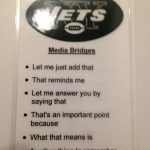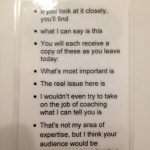During High School and college I worked at several radio stations and was lucky enough to interview several famous musicians. One was the Piano Man himself, Billy Joel. He shared some advice that some 20+ years later still resonated with me. He said, “Figure out what you’re good at, and do that. Otherwise, you’re just wasting your time.”
Over the years, my memory of that interview is triggered by something I see or hear. It’s happened a few times this week so I thought I’d write about it.
The first triggers stemmed from LinkedIn and Facebook posts. I saw a few different photos and memes on the importance of passion. For example, one said “Working hard for something we don’t care about is called stress. Working hard for something we love is called passion.”
I also received a phone call from a peer that I highly respect seeking some advice. About a year ago he quit his job after feeling burnt out. He launched a new career and business, which is doing well. But he admitted he was considering returning to his former career because he missed the passion he used to have for his work.
It got me thinking. Being good at something isn’t the same as being passionate about it.
After that long lead-in, here’s my point. Don’t waste your time. Figure out a way to combine your personal passion with what you’re good at doing.
Here’s an example. A financial advisor I know (no, not my wife) had a passion to ensure that his personal investments were not “terror infested.” Unfortunately, no mutual fund existed that screened out U.S. companies operating in terror nations like Iran, Syria and North Korea. So he created the nation’s only mutual fund developed to ensure all investments are terror free. The fund screens the S&P 500 for companies operating in terror nations and replaces them with companies who have decided not to operate in rogue states. He combined his talent with his passion. It’s not easy, but it’s fulfilling and personally rewarding.
Our role as public relations professionals is to recognize the passion within ourselves, our organization and within our peers. Then, we need to tell that story. These human interest based stories will create memorable images that will create positive public awareness for your company.
Because passion is more memorable, and more contagious, than talent.
So to update Billy Joel’s quote, “Figure out what you’re good at and passionate about, and do that. Otherwise, you’re just wasting your time.”


